Another look. Consider this the follow-up to The Anatomy of Agbalumo post.
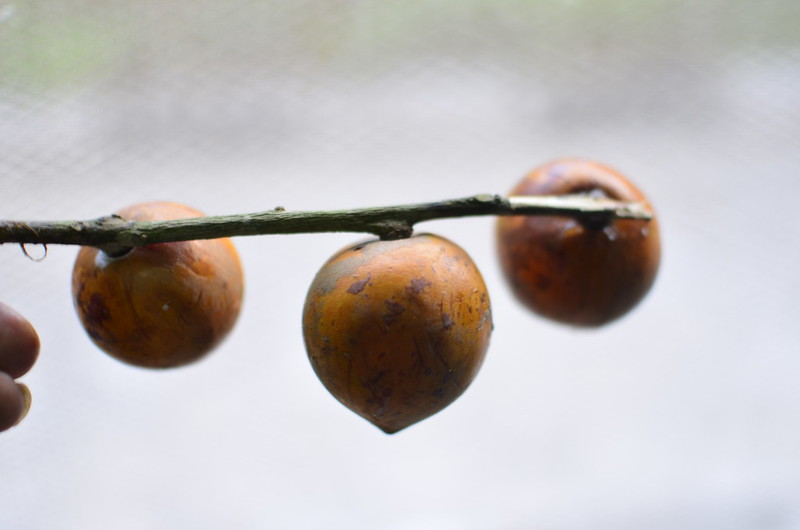
The sweetest ones I’ve had are the ones I got this week – red-fleshed, huge and soft to the touch. Really juicy and from Benin Republic. These are the ones I used them in my Agbalumo liqueur.
Looks
Udara. Agbalumo. White star apple. Chrysophyllum albidum. African star apple, of the familySapotaceae. The head, where the stalk sits bears a ‘flower-pattern’ cap which reminds me of the larger one on the purple mangosteen.
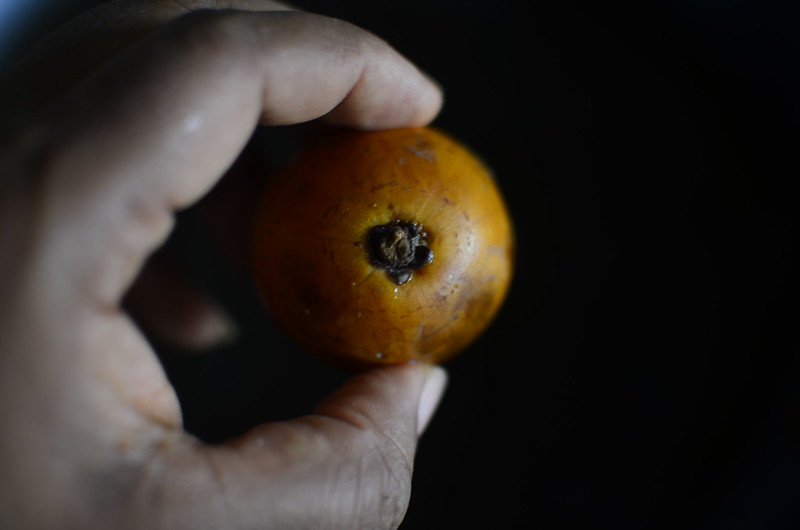
Unripe agbalumo is green around the stalk. The fruit will be very sour and tart, compared with ripe ones where the flesh is all orange, particularly around the ‘head’.

Chrysophyllum is a group of trees in the Sapotaceae described as a genus by Linnaeus in 1753.[2][3]
The genus is native to tropical regions throughout the world, with the greatest number of species in northern South America. One species, C. oliviforme, extends north to southern Florida.[4]
Chrysophyllum members are usually tropical trees, often growing rapidly to 10–20 m or more in height. The leaves are oval, 3–15 cm long, green above, densely golden pubescent below, from which the genus is named.[5] The flowers are small (3–8 mm), purplish white and have a sweet fragrant smell; they are clustered several together, and are hermaphroditic (self fertile). The fruit is edible; round, usually purple skinned (sometimes greenish-white), often green around the calyx, with a star pattern in the pulp; the flattened seeds are light brown and hard. The fruit skin is chewy like gum, and contrary to some reports, is edible.citation needed][6][7]; Wikipedia
Weight
Most agbalumo I enjoyed, worked with this season weighed between 50 and 120g, up to half of which is the weight of the seeds.
A typical 50g fruit is about 5g skin, 15g flesh and 30g seeds.
Cross-section
…,which can also be seen when the head of the fruit is pressed together to open it up, usually for sucking.
Sometimes, the latex escapes before the fruit is ‘open’, and ends up dried around the stalk and skin.

Furthermore, when you slice, the star pattern of the agbalumo is revealed – the source of its star apple name.
Processing agbalumo
Because of the amount of latex in agbalumo, I advise using glass bowls as ‘holding containers’ if stripping the fruit down. I’m not sure how the acid in it reacts with metal, so I won’t give that recommendation for storage.
Peeling
You can actually peel the sheath off the seeds, using a knife. I’ve mentioned a few times just how different the sheath around the seeds is very different in texture and taste to the flesh.
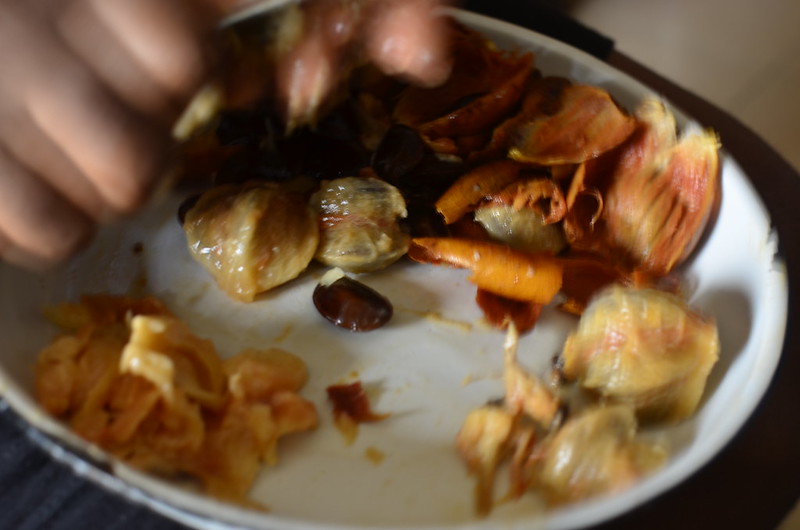
Though tedious, it is interesting to see this is possible and explore ways it can be used.
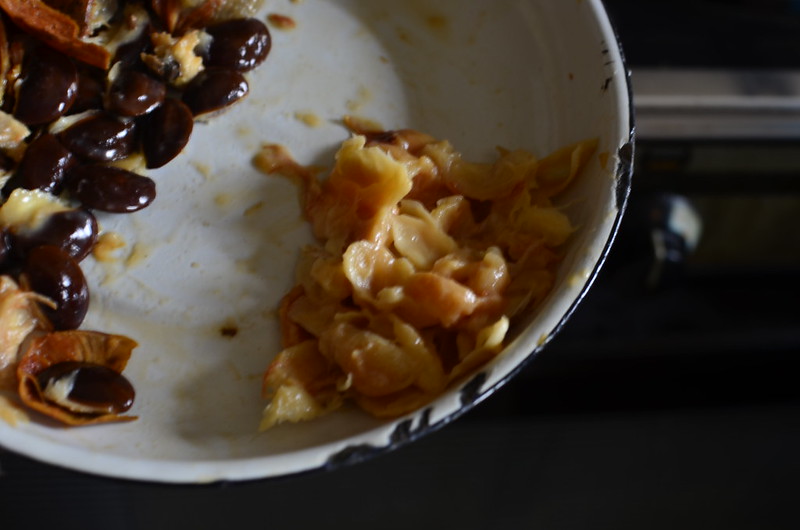
I enjoyed them candied in a delicious mixture made by Ramon. The seeds – the sweetest part of the mixture becomes even sweeter. It is such a thrill to get a whole mass of the sweetness and chewiness of the heaths without the agony of dealing with a hundred seeds. Well 20.
Heating
I’ve observed that cooking agbalumo tends to activate the gum-forming compounds – it was Ramon who cottoned me on to this.
The next discovery occurred when I used my handheld blender to puree a mixture for a syrup (which ended up as jelly/ jam by the way).
When I was done, I noticed the blades and the pin attached to the base of the blades was full of thick gum. It took considerable energy to pry the gum from the pin.
There. All done with my recent observations on Agbalumo. I know, you’re wondering if this love will ever end? I dunno. Let’s wait and see, right? Time will tell. xxx

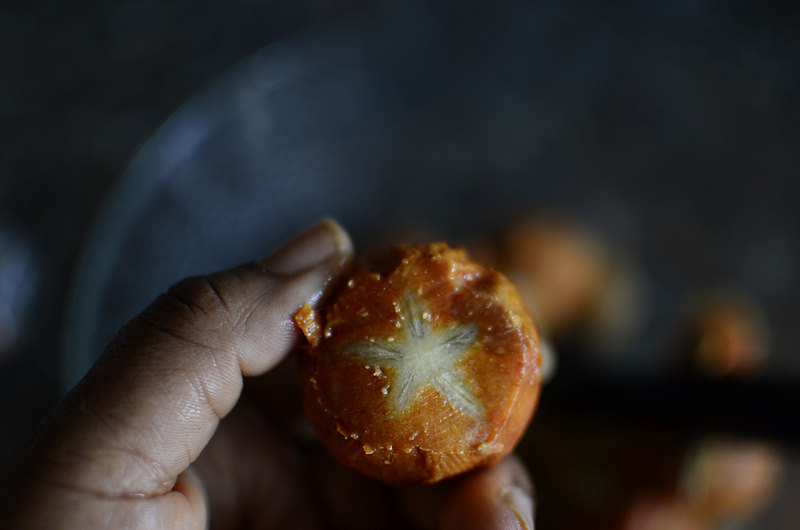
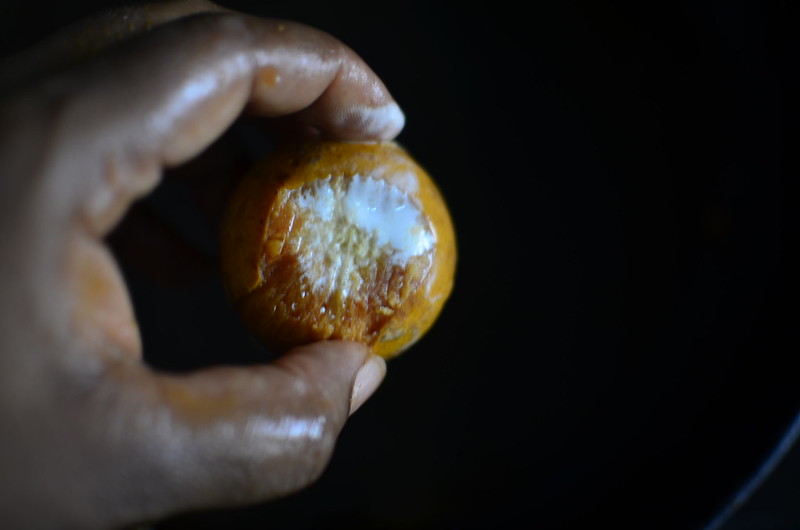
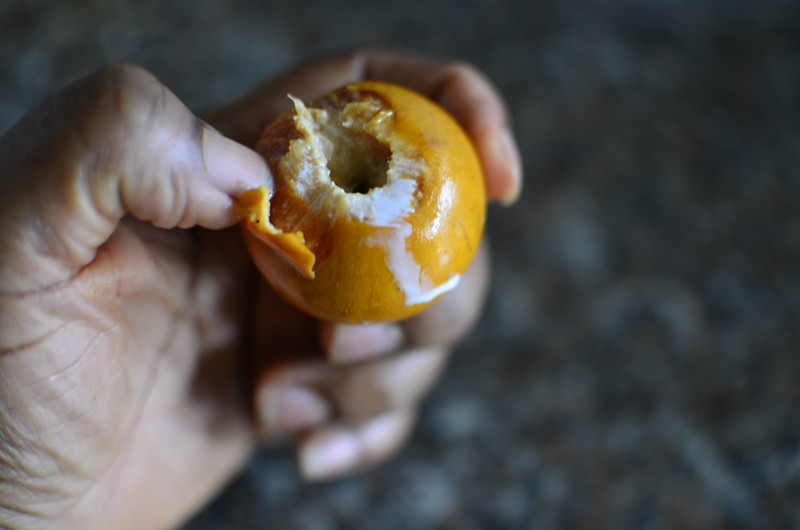


Leave a Reply